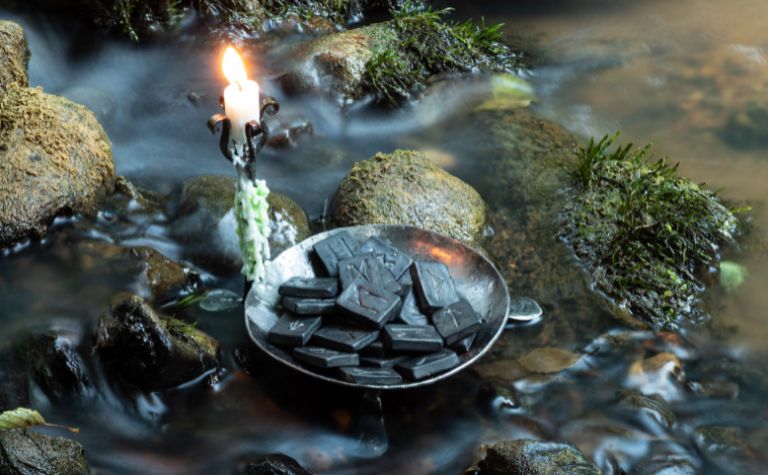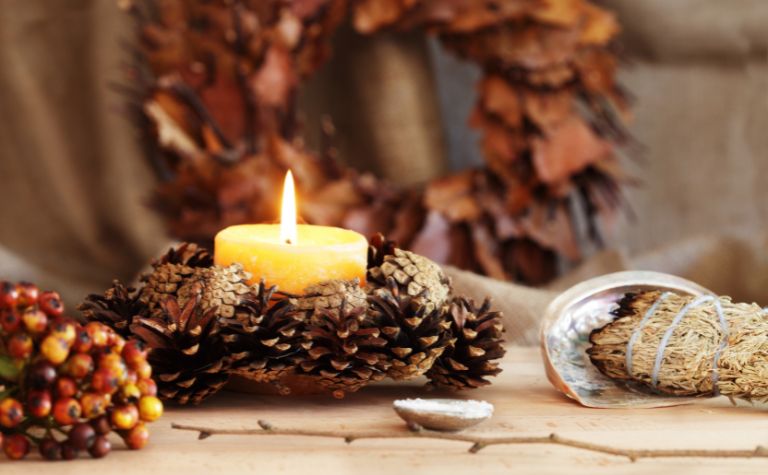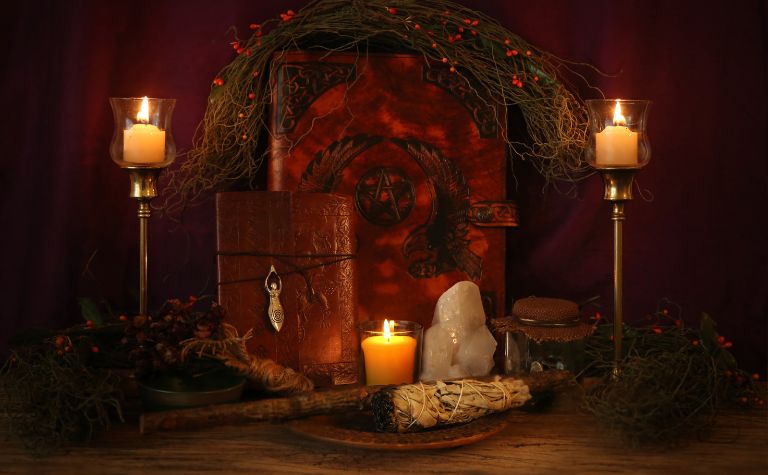Reincarnation is found in a variety of belief systems around the world, including many Eastern religions like Hinduism and Buddhism.
However, others, like Christianity and Islam, have no belief in reincarnation. What about Norse pagans – did they believe in reincarnation?
Norse pagans may have believed in reincarnation. They believed that there were four parts of the self, and there is evidence they believed that at least one of them, the hugr, would reincarnate.
However, there is limited evidence to explain how reincarnation worked among Norse pagans.
This article will look at the existing evidence about reincarnation in Norse paganism. It will also answer some other questions readers may have about the afterlife in the Norse religion.
Also, see 7 Norse Tattoos To Avoid to learn more.

The Four Parts of the Self in Norse Paganism
When most people think of the soul, they think of it as a singular “object.” However, this wasn’t the case for Norse pagans. In Norse pagan belief, there were four parts of the self.
Hamr
The hamr can best be described as a person’s appearance. This was the one part of the self that was not immutable.
Rather, it was changeable, and there are plenty of references to shapeshifters in Norse pagan belief (Loki being perhaps the best known).
The process of shapeshifting was known literally as “changing hamr,” indicating just how changeable one’s appearance could be. [1]
Hugr
This is a person’s personality and characteristics. It can also be translated to mean someone’s mind or their inner self.
This part of the self stays with the person, both during life and after death. It is one of the elements that make a person inherently unique and losing it is akin to losing one’s sense of self and knowledge of who they are.
This is also the part of the self that may have been reincarnated. The evidence of Norse pagan belief in reincarnation indicates they believed that a person’s hugr could be reincarnated in a newborn.
This newborn was generally a relative of the dead person, allowing them more time with their family and loved ones.
Fylgja
This is essentially a person’s totem spirit that could only be seen by those with second sight. It would generally take on the form of an animal, though a human-shaped familiar spirit was not uncommon.
A person’s fylgja reflected their hugr (their totem spirit was a reflection of their personality). So, a sly person might have a fox fylgja, while a wise person might have a raven fylgja.
The fylgja was connected to a person’s fortune [2] and hamingja. After a person’s death, this part of the self ceases to exist.
Hamingja
The concept of the hamingja is hard to define. It’s a combination of one’s luck and their inherent ability to be successful. It was considered to be a distinct part of a person’s self, an object in its own right.
The hamingja was passed down through a family, inherited by a person’s relations. As part of it being inherited, it could be passed down to a specific person.
This was also considered a form of reincarnation, and it was believed that when the hamingja was given to a particular person, it was reincarnated in them. [3]
As an object, it could also be lent to other people.
Also, see Does Marvel Own Norse Mythology? to learn more.

Examples of Reincarnation in Norse Paganism
There are several literary examples of reincarnation in Norse paganism. The most prominent of these examples is the story of Helgi Hjörvarðsson and Sváfa, as described in the poem Helgakviða Hjörvarðssonar.
In this story, Sváfa is the most beautiful of the Valkyries, and she falls in love with Helgi, son of the King of Norway.
After winning many battles and becoming famous for his skills, he asks Sváfa’s father, King Eylimi, for her hand in marriage and marries her.
However, the son of one of the kings he had killed challenges Helgi to a duel. During it, he is dealt a mortal wound and dies.
The poem goes on to say that Helgi and Sváfa would be reborn twice [4]:
- As Helgi Hundingsbane and Sigrún, whose story is told in the poems Helgakviða Hundingsbana I and Helgakviða Hundingsbana II
- As Helgi Haddingjaskati and Kára, whose story is told in the poem Káruljóð (a part of the longer saga Hrómundar saga Gripssonar), which has not survived
The Challenge in Explaining Reincarnation Among Norse Pagans
As mentioned above, the Norse pagans did not believe in a singular soul – rather, they believed there were four parts to the self.
The idea of a singular soul was only introduced in the Nordic countries following the introduction of Christianity.
As it stands, there are limited surviving inscriptions that come directly from the Viking Age Scandinavians.
Rather, the Prose Edda and the Poetic Edda, which were written in the 13th century (after the Christian spiritual conquest of Scandinavia), are scholars’ most prominent sources about Norse religious beliefs. [5]
Additionally, writings from the 11th century about the “False Gods” worshipped by the Scandinavians make no mention of a belief in reincarnation among them, even though rebirth and reincarnation had been declared heretical in the 4th and 6th centuries. [6]
Given these considerations, there is a possibility that the modern understanding of reincarnation was not what was understood by the Norse pagans.
However, unless better sources make themselves known, this remains the best possible understanding of beliefs in reincarnation among Norse pagans.
Also, see What Is Norse Paganism? to learn more.

What Is the Afterlife in Norse Paganism?
There are five different afterlives in Norse paganism – Valhalla, Folkvangr, Hel, the underwater home of Ran, and the burial mounds. There is also the possibility of rebirth.
The possibility of rebirth is described above. The other afterlives are [7]:
- Valhalla: Perhaps the best-known of the afterlives, this is where warriors chosen by Odin and the Valkyries live and train until they have to fight in battle during Ragnarok, the end of the world.
- Folkvangr: This is the afterlife ruled by the goddess Freyja. Half the warriors go to Valhalla, while the other half go here. There is limited information on Folkvangr in the extant Norse sagas.
- Hel: The afterlife most of the dead go to, ruled over by the goddess Hel. The dead who go here do everything they would in life and occasionally stay together with people from their families and localities.
- The Underwater Home of Ran: Ran is a goddess and/or giantess who is the personification of the sea. She lives underwater, and her home is the afterlife for those lost at sea, including sailors.
- Burial Mounds: An afterlife in which the dead do not travel to another realm or rebirth – instead, they remain with their bodies, becoming malevolent draugr or haugbúi, who are neither malevolent nor benevolent unless their graves are disturbed. [8][9]
Conclusion
It’s unclear whether Norse pagans believed in reincarnation in the way most people understand it today. The possibility certainly exists, however.
Also, see Norse Mythology vs. Christianity to learn more.
References:
[1] Source
[2] Source
[3] Source
[4] Source
[5] Source
[6] Source
[7] Source
[8] Source
[9] Source
